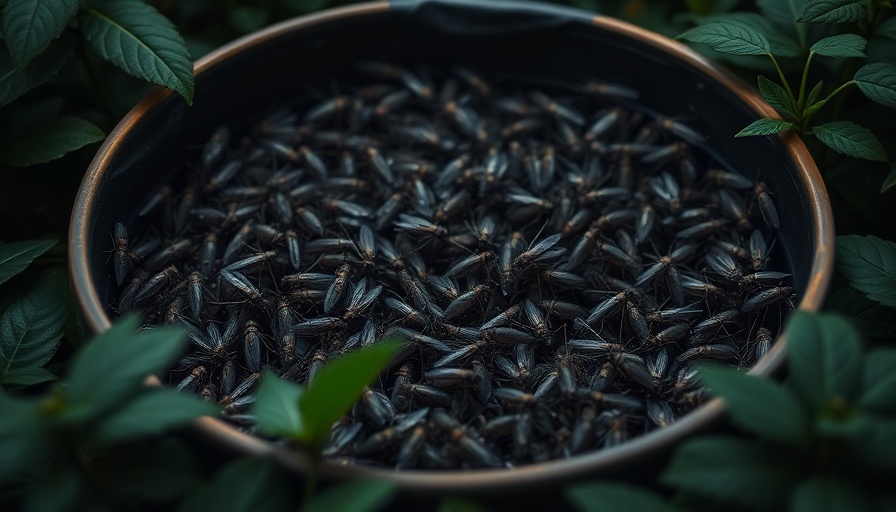
Understanding the Mosquito Bucket of Doom
As the summer heat lingers and climate change causes extended mosquito seasons, the hunt for effective pest control solutions has reached a fever pitch. Among the latest trends is the viral "mosquito bucket of doom," a DIY project that has caught the eyes of many pest-weary homeowners. But does it really work, or is it just another instance of social media hype?
Crafting Your Own Mosquito Bucket: A DIY Guide
The beauty of the mosquito bucket of doom lies in its simplicity. You only need three main ingredients: water, yard debris (like leaves or grass clippings), and a larvicide such as Mosquito Bits or Mosquito Dunks, which contain the bacteria Bacillus thuringiensis israelensis (Bti). This bacterium is harmless to humans and pets, yet lethal to mosquito larvae. This method simulates an enticing breeding ground for mosquitoes while ensuring that the larvae don’t make it to adulthood.
Why Mosquitoes Are More Persistent Than Ever
With fluctuating weather patterns and rising temperatures, mosquitoes have adapted to breed more efficiently during the warmer months. Tony King, a pest control expert, clearly states that while the bucket tactic won’t eliminate adult mosquitoes outright, it disrupts their breeding cycle, thus managing populations in your yard effectively. This makes the bucket a sensible addition to your home pest control strategy.
Effective Practices for Using Your Mosquito Bucket
To create your mosquito bucket, fill a container with water, add the desired amount of larvicide, and then mix in yard debris. A common mistake is using too much water; mosquitoes are adept at finding breeding spots even in shallow settings. Smaller containers are preferable, as they encourage larvae to congregate.
Additionally, maintaining your mosquito bucket is crucial. Heavy rain can dilute the larvicide, so regularly check the mixture and reapply as necessary to keep it effective. Monitor these buckets for any unwanted wildlife that may accidentally fall in, providing a stick for them to escape if needed.
Limitations of the Bucket: What You Need to Know
While the bucket is a novel and engaging way to manage mosquito populations, it’s not a one-size-fits-all solution. This method only targets larvae, so it won’t have any effect on adult mosquitoes and other life stages. Additionally, species that prefer laying eggs in moist soil rather than water are unaffected. It's also important to remember that this approach is just one part of a comprehensive pest management strategy.
Integration with Other DIY Home Projects
The creation of a mosquito bucket fits perfectly within the broader spectrum of DIY home improvement projects. Whether you’re interested in enhancing your yard or tackling home organization, integrating innovative pest control solutions into your overall home upkeep can promote a refreshing living environment. Plus, DIY projects not only save money but also provide satisfaction and hands-on engagement with your home.
Broader Perspectives on DIY Home Practices
DIY culture thrives on both creativity and practicality, showcasing a wide range of home improvement ideas. Just as the mosquito bucket serves a specific purpose, various home projects can enhance comfort and aesthetics throughout your living space. From cleaning hacks to garden landscaping, understanding the merits and limitations of each approach can empower you to make informed decisions about your home.
The Takeaway: Embrace Your Inner DIYer
Given the effectiveness of the mosquito bucket of doom and its potential to integrate with other DIY endeavors, it’s time to embrace your inner DIYer. Empower yourself with this knowledge to mitigate mosquito annoyance in your outdoor spaces effectively. Explore other home improvement ideas as you embark on this journey, creating a home that is not only enjoyable but also a hub of sustainable living practices.
By implementing the mosquito bucket strategy and tapping into other DIY tactics, you can harness your creativity and improve your home environment while keeping the mosquitoes at bay!
 Add Row
Add Row  Add
Add 




Write A Comment